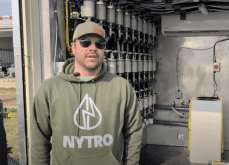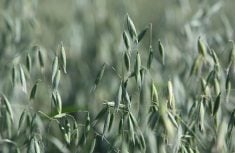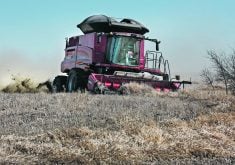Uniform seedling emergence is critical to stand establishment and production in forage crops, but a lack of comparative data between what happens in the lab and in the field made seeding practices more of a trial and error process, until now.
A recent Agriculture Development Fund research project conducted by the University of Saskatchewan has shed new light on this issue through dormancy modelling.
Researchers from the university’s plant sciences department performed field experiments near Saskatoon in 2003 and 2004 using two cultivars of western wheatgrass and orchard grass, with four seeding dates between early May and mid-June. Laboratory experiments were conducted to determine the effects of temperature on seed dormancy and the prediction of seedling emergence, using a thermal time model.
Read Also

VIDEO: Ag in Motion documentary launches second season
The second season of the the Western Producer’s documentary series about Ag in Motion launched Oct. 8.
“We observed that for forage species, when addressing the issue of seed dormancy, often there is a disagreement between seed germination tests in the laboratory and seedling emergence in the field,” said lead investigator Yuguang Bai.
“We wanted to find out the reason for the difference, and we hoped the results would help producers in selecting the optimal seeding rates as well as the best seeding dates.”
Bai said fluctuating temperatures in the field are a critical element that affects seed dormancy and germination.
“Using a thermal time model approach, we discovered that temperature does indeed affect dormancy and that fluctuating temperatures can break dormancy in the two species studied under field conditions.”
He said a 10 C difference between high and low temperatures was most efficient in breaking dormancy, which was close to temperature fluctuations measured in the field at a one centimetre seeding depth.
“The implication is that if you want to test germination for the determination of seeding rate, you need to mimic temperature conditions in the field. Otherwise, if you use constant temperatures for germination tests, you will end up with unnecessarily high seeding rates,” Bai said.
“Between orchard grass and western wheatgrass, the western wheatgrass has a narrower range of optimal temperature for germination and dormancy breaking.”
As a result of his research, Bai believes a later seeding date of late May or early June would result in the best seed germination, seedling emergence and stand establishment for western wheatgrass when soil moisture is not limiting.
“Orchard grass, on the other hand, is less sensitive to temperature during dormancy breaking and germination. Thus, seeding between early May and early June would yield good results, and seedling emergence in the field can be predicted with the thermal time model.”














